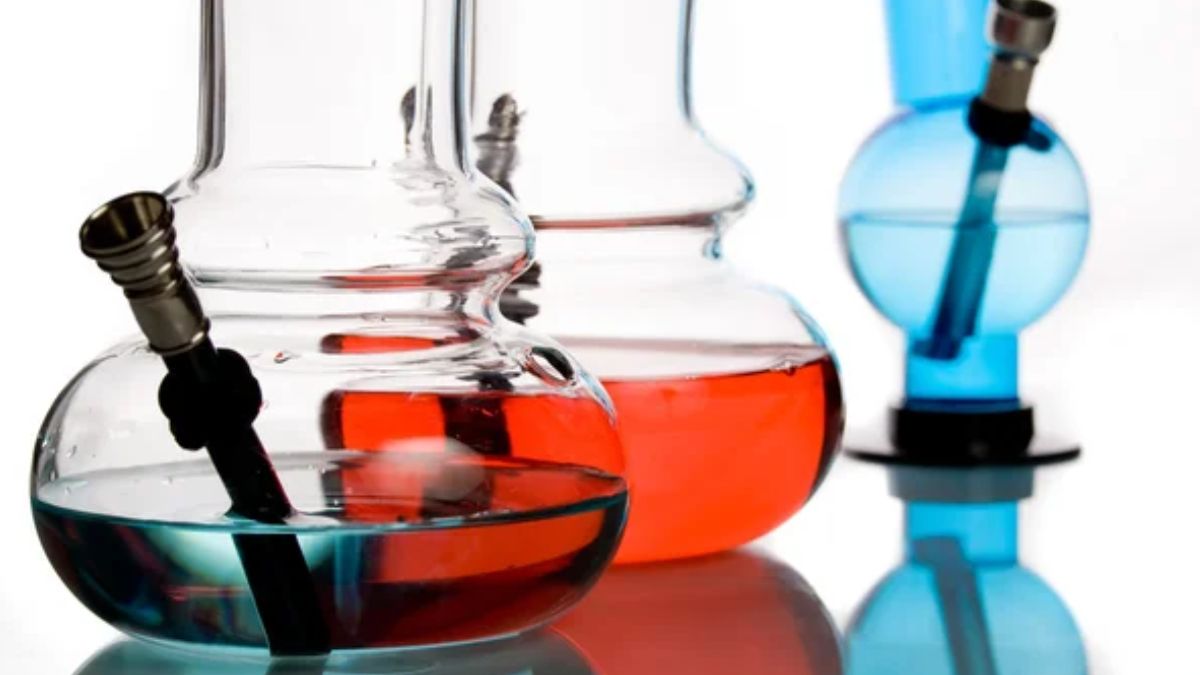Who Created the Bong?

Without investigating further, one might assume that bongs were invented recently or date back to the late 1900s. But it is surprising how long old bongs, aka water pipes, have been around. Written records show that people have been using variations of bongs to smoke since the 16th century in central Asia.
The Thai bamboo cane “Ba ung” water pipes were ubiquitous throughout Central Asia in the 16th century for smoking kancha, hashish, or hemp plants. It’s where the word bong originated from. Though centuries separate us from indigenous people that enjoyed bongs, the effect and usage are the same.
Time has given bongs a more modern and refined look with more features. Glass bongs, for example, still retain the original design, but it’s miles different from the African earth pipe and Thai bamboo cane “the Ba ung” used in the past. The history of the bong is rich and varies. We will be discussing more on its creation and usage in this article.
History of the Bong
For the longest time, our understanding of the history of bongs was that the indigenous people of Africa and the Thai were the first to use them. Up until 2013, they were the oldest examples found. However, time revealed new evidence that challenged the status quo, giving Russia the title of having the oldest bong.
This happened in 2013 when excavators of a kurgan (a Scythian burial mound) in Russia discovered two ornate, solid gold bongs dating to around 400 BC. It was surprising information to unearth, and knowing that Scythian tribal chiefs used gold vessels 2400 years ago changed things. Cannabis and opium residues were found inside the ancient Scythian relics.
It put the bong on earth about 1,500 years earlier than the discovery in Africa and Thailand. Notwithstanding, the circulation of the bong to other parts of the world happened via the Silk Road. The Chinese royalty highly favored the bong for smoking tobacco during the Qing Dynasty.
Its popularity waned during the Republic era. But it did not stop Empress Dowager Cixi from imbibing in it over snuff bottles. Her preference for water pipes led to her getting buried with a few of her favorites when she died. The Palace Museum houses some of her collections.
Bob Snodgras’s Glass Bong Contribution
Although we can’t pinpoint the exact creator of bongs, we can shed light on the glass bong renaissance of the 1960s and 1970s. Bob Snodgras invented modern-day glass bongs while following a Grateful Dead tour. His act became vastly popular, appealing to a wide range of people.
After settling in Eugene, Bob Snodgras heightened his reputation by inventing the fuming technique that gives pipes their characteristic psychedelic colors. According to him, the fuming technique happened by mistake. However, the mistake established him as the godfather of the modern-day bong.
He took on students, including Jason Harris of Jerome Baker Designs, known in the 90s for his high-quality glass bongs. The shape of Bob Snodgras water pipes, like a glass vase with chillum and rubber ring to seal it, is similar to modern-day “Hollandbongs”:
Are Bongs/Waterpipes Legal?
The law around bongs and waterpipes is complicated. It’s illegal to possess drug paraphernalia which bongs/waterpipes represent. Drug paraphernalia is anything that’s primarily used to make, conceal or ingest illegal drugs. As it stands, water pipes or bongs are used individually to ingest different substances, hence their illegality.
Many don’t precisely know what legally constitutes drug paraphernalia. Given the right context, anything can be drug paraphernalia, provided it has residues of drugs, even if it’s the tinfoil you use in wrapping a DIY marijuana pipe. If it’s found in your possession, you will get in trouble with the law since it has traces of marijuana.
Waterpipes or bongs are legal, depending on the context it’s used. You won’t get in trouble if you use it for smoking tobacco. This is because tobacco is legal, and that’s how head shops sell water pipes without getting shut down by the government. Also, head shops label the water pipes with a warning stating they are only for use with tobacco.
Some head shops won’t sell water pipes to you if you refer to them as glass bongs or use phrases usually associated with an illegal drug. However, this all boils down to the state you’re in. Marijuana and cannabis are legal in some states. Having water bongs in your possession in those states won’t matter. So, if you intend to travel, check the legal stand of bongs in the state to avoid getting into trouble.
How to Use Glass Bongs
For our newbies about to have their first euphoria with glass bongs, you did well by choosing glass bongs. They are simple to use and highly effective. It purifies smoke through water to create smooth, big, and clean hits. Glass bongs have favorable features like a comfortable mouthpiece, which adds to its convenience.
Some have a bent neck which still aids their efficiency. To use a glass bong, first, pour water into the water bong, then fill the bowl with marijuana. If you want a smoother hit, grind the marijuana. Furthermore, put your mouth over the mouthpiece at the top, light a flame over the bowl, and inhale slowly.
The water filters the weed as it burns, filling the chamber with smoke and trapping ash and tar in the liquid. This helps maintain the purity of the smoke and explains why the bongwater has an acrid smell and bad look. The water acts as a cooling agent, ensuring the smoke goes smoothly down your throat.
Change the water occasionally and instantly clean it up if it spills on your rug and carpet. The smell doesn’t go down well when allowed to stay. Glass bongs are easy to clean with water or isopropyl alcohol, depending on which is available.
Factors to Consider When Purchasing Glass Bongs
It’s a given how easy it is to fashion bongs from apple or plastic bottles. But there’s no reason to inhale harsh and toxic chemicals from DIY when you can have glass bongs with excellent features.
There are tons of glass bongs in the market, and it’s easy to get spoiled for choices. But having some specifications and intent in mind would help you choose faster. So, before purchasing glass bongs, here are some factors to consider.
Material
Manufacturers produce different types of bongs with different materials like plastic, glass, metal, ceramic, etc. they all offer the same outcome but have different prices, durability, and style. Go for the glass bong if you want to see the bong bubbling. It’s durable with no taste, unlike the much cheaper plastic bong, which can alter its taste.
Budget
It’s easy to get carried away with the many bong designs and features on the market. But having a budget helps you not to go overboard. The price ranges differ with the bong’s style, features, material, and durability. For a luxurious experience with colder hits, go for ceramic bongs.
They look fancy and have low heat conductivity. However, it’s not cheap. You have to budget a lot for it. Note regardless of the features and designs, you can get glass bongs with fantastic features at a cheaper rate without breaking the bank.
Weight and Height
Another thing to consider is the weight and height of the bong. If you have a space reserved for the bong, have that in mind to ensure you purchase a bong that will fit the space. Also, if you intend to travel or carry the bong around your home frequently, you should consider the weight. Check the weight when it has water in it and when it’s empty. This way, it won’t burden you heedlessly with its weight while traveling.
Features
Bongs have different features that you should consider before purchasing. For example, the ice catcher bongs design gives you deliciously cold hits from the indents in the chamber neck. Also, the percolator bong design is for ultimate filtration and diffusion. Another bong to look out for is those with splash guards with indents that catch the murky droplets of the bongwater.
It aids in filtering the aftertaste of the bongwater before it gets to the mouthpiece. Go for the ash catchers to ensure your smoke has the cleanest hits. Ash catchers catch the ash and tar particles before the water starts working. But the catch is you can purchase an ash catcher separately if you desire another bong without it.
Conclusion
Bongs or water pipes are not new inventions. They have been in use long before the 16th century. It’s interesting how far the designs have come. But that’s the beauty of innovation. It gives new meaning and features to ancient designs to benefit current-day people.





